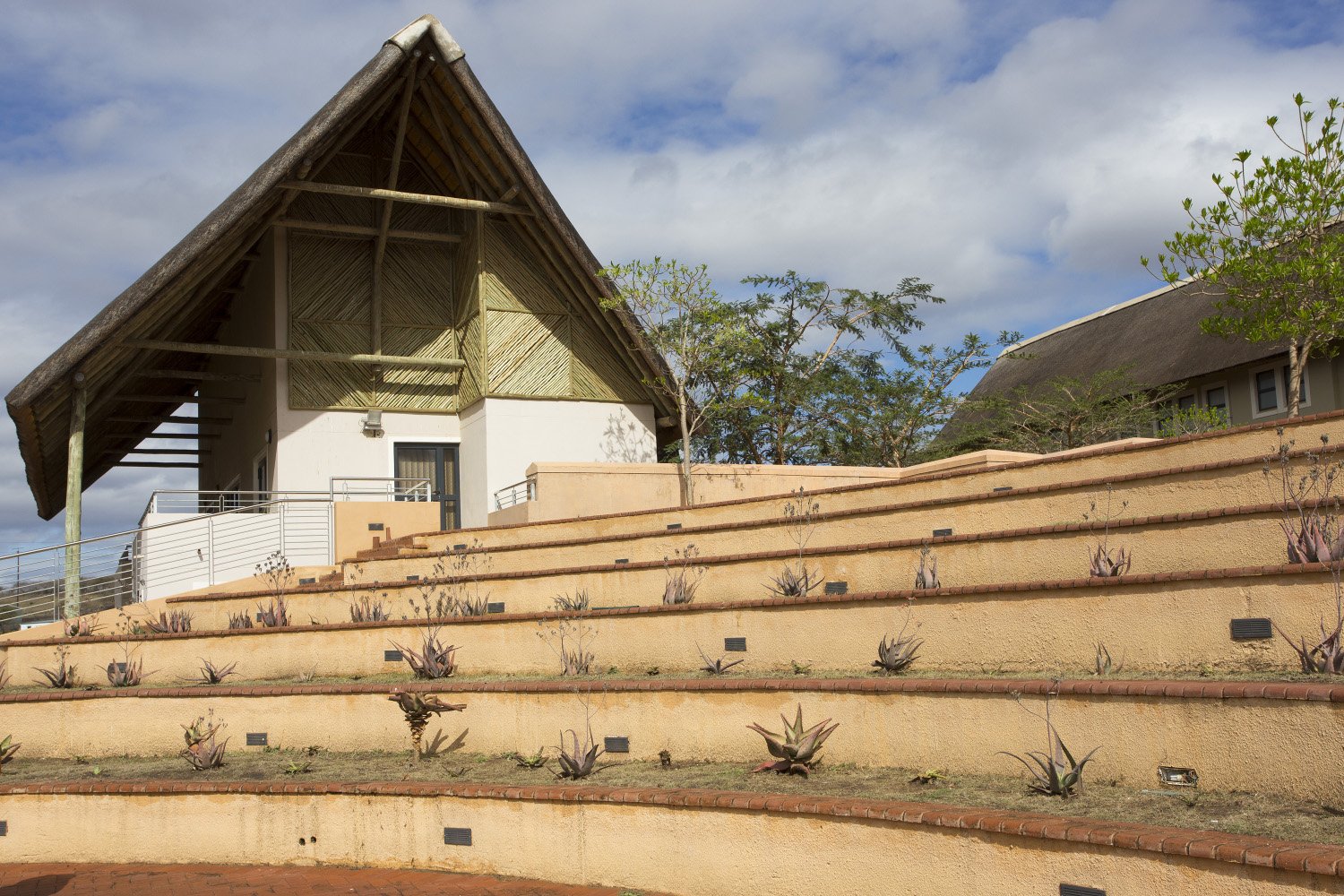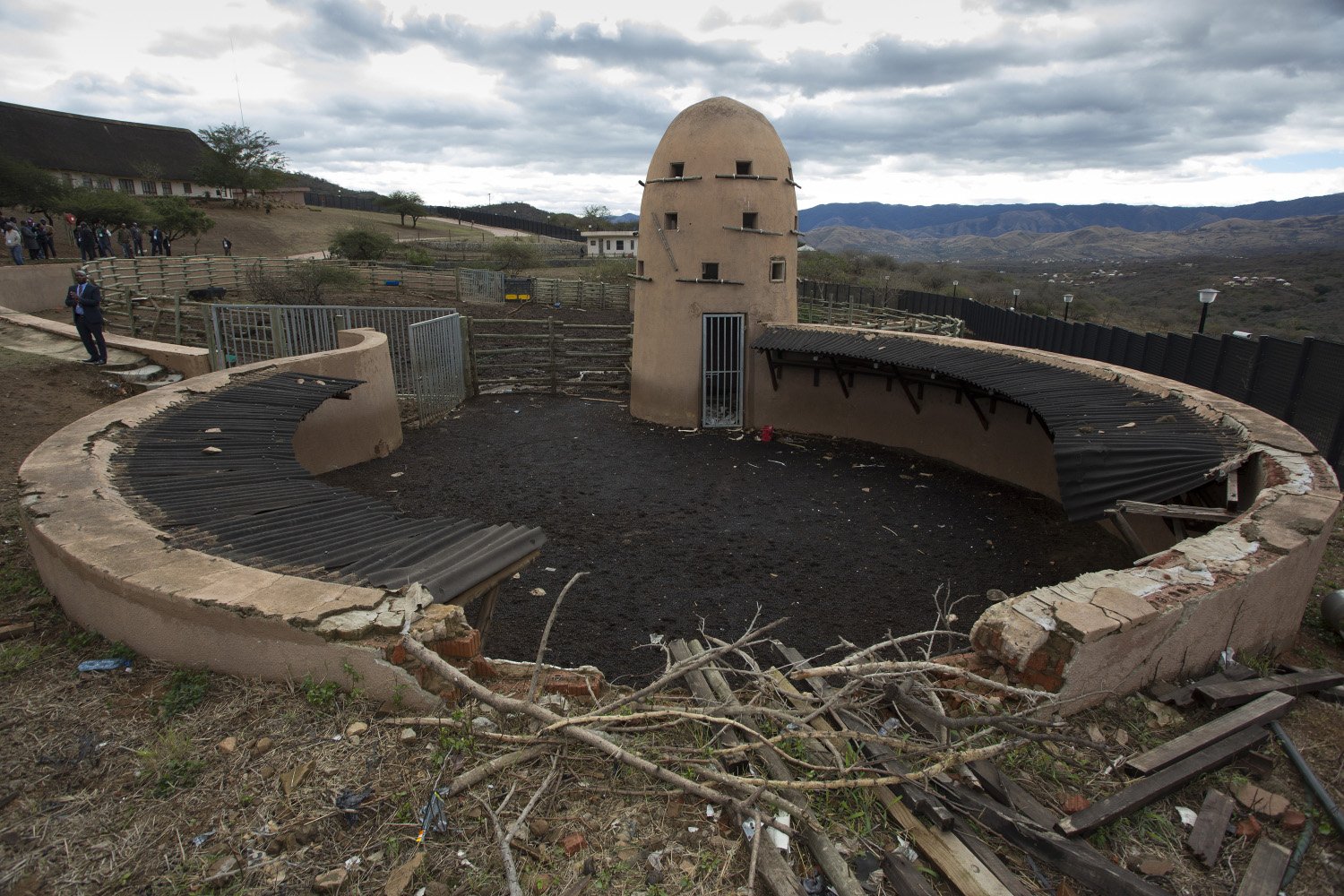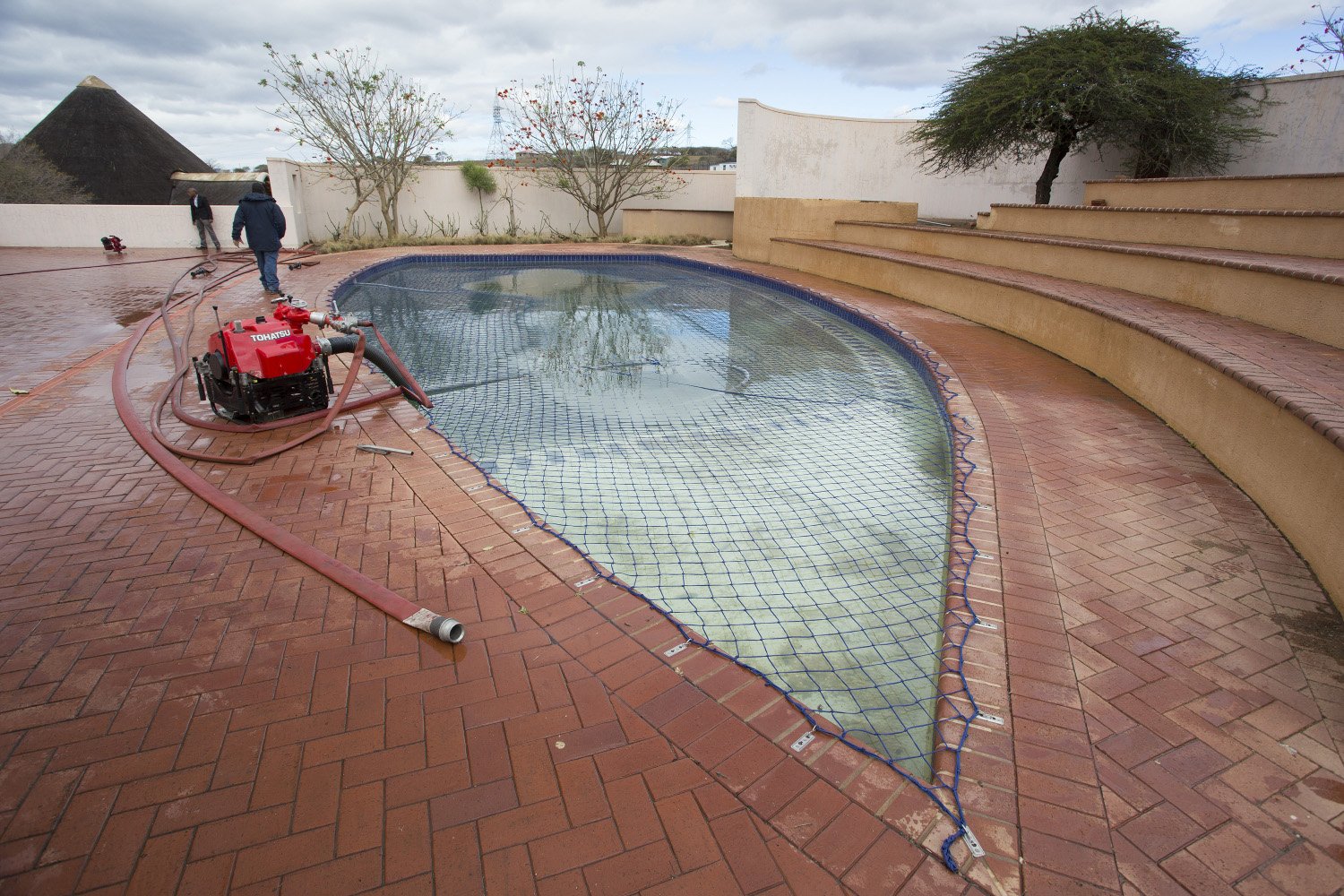The controversy-plagued Nkandla compound.
A media tour of Nkandla on Sunday gave South Africans the first ever opportunity, in five years of slow-dragging scandal, to put pictures to some of the state-funded infrastructure built inside President Jacob Zuma’s private rural compound.
Few South Africans found themselves impressed with what their money had bought.
The Mail & Guardian was one of the investigative newspapers not invited on the tour. However, our colleague, photographer Matthew Middleton at News24 provided these photographs.

The amphitheatre
Cost: Undetermined
The amphitheatre flows out of a state-built visitors’ centre in what struck public protector Thuli Madonsela as a clear attempt to create an entertainment area for the Zuma family’s use. A succession of government reports, most lately from Police Minister Nathi Nhleko, insists it is a purely functional soil-retention mechanism.
The cost of the amphitheatre has not yet been determined and neither the Special Investigating Unit (SIU) nor the public protector hazarded an estimate of its cost, because payments for its construction came out of other, larger sub-projects including landscaping, road construction, paving, civil works and soil rehabilitation. Much of the work was paid for without any breakdown on how payments were calculated.
Notably, the terraced sections between steps were originally covered with grass and were only planted with aloes some time between 2012, when documents still described the area as a sectioned lawn, and the creation of a 2014 government report that held it impossible to be used as a seating area, in part because the terraces contained plants.

The chicken run
Cost: In the low hundreds of thousands of rands
The security argument for building a chicken run is that the Zuma family used to have a number of different accommodations for chickens about the property, all of which would qualify as informal housing. The problem with this was twofold: these structures provided spots hidden from patrols, lights and cameras, and they allowed chickens easy exit to roam into areas where they could trigger security sensors, thus better accommodations were required.
Nobody has a particular problem with this reasoning. The SIU has not sought to reclaim the money spent on the chicken run and Madonsela has not identified it as an undue improvement in and of itself.
But the chicken run was treated as an adjunct to the building of a large cattle kraal with a private exit from the complex. The entire shebang cost around R1.2-million, a number that is not broken down into the cost of a culvert (a considerable engineering work), the large kraal and the smaller chicken run. That R1.2-million cost was, in turn, bundled under “general site works”.
The kraal, Zuma told Madonsela during her investigations, had been a request of his because his herd was growing. As such, and considering the huge cost of it, she found he should repay a portion of the cost as he had initially committed to do.

The swimming pool
Cost: An undetermined portion between R2.82-million and R3.96-million
Although it took up well below 2% of the total amount spent on Nkandla, the state-built swimming pool has captured the public imagination more than any other feature, not least because of the state-created neologism used to defend it: firepool.
Although popularly referred to as a R3.9-million pool, that number is wildly inaccurate. As with other contentious features, the cost of the pool was bundled into a larger sub-project, in this case a “VIP parking area” for the use of the president and first ladies, and invoices indicate that the parking area took up a large portion of the money. The SIU calculated that the parking-and-pool expenditure came to R3 964 239. The public protector calculated the cost of the combo at R2 819 051.66.
This was, of course, considerably more than would have been paid for a functional water reservoir to aid in fire-fighting, which security assessments found necessary.
Documentation and testimony around the swimming pool did a great deal to undermine Zuma’s insistence, on many occasions, that he had not been aware of the scale or details of construction work at his home. Architect Minenhle Makhanya and Hendrietta Bogopane-Zulu, at the time deputy minister of public works, had at various stages supposedly conferred with Zuma about the swimming pool design, in one instance because of concerns that it held cost implications for him.